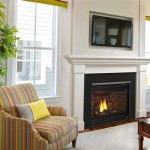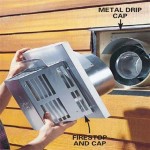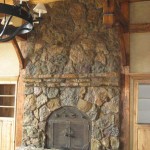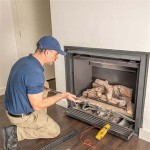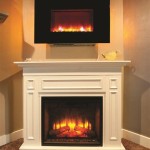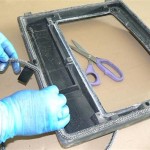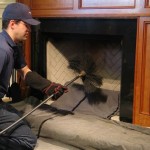```html
Gas Fireplaces in Minnesota: A Comprehensive Guide
Minnesota, with its long, cold winters, makes a gas fireplace a desirable addition to many homes. Gas fireplaces offer a convenient and efficient source of supplemental heat, ambiance, and aesthetic appeal. Unlike traditional wood-burning fireplaces, gas fireplaces eliminate the need for wood storage, chopping, and the messy cleanup associated with ashes. They are also generally easier to operate and offer more consistent heat output. This article explores various aspects of gas fireplaces in Minnesota, including their benefits, types, installation considerations, maintenance requirements, and safety precautions.
Benefits of Gas Fireplaces in Minnesota
Gas fireplaces provide several advantages for Minnesota homeowners. One of the most significant benefits is convenience. With the simple flip of a switch or press of a button on a remote control, a gas fireplace can be ignited, providing instant warmth and creating a cozy atmosphere. This is particularly appealing during the long winter months when quick and reliable heat is essential. Furthermore, gas fireplaces require minimal maintenance compared to wood-burning fireplaces. There is no need to clean out ashes, and the frequency of professional servicing is typically less. The controlled combustion of gas also results in cleaner emissions, contributing to better indoor air quality and reduced environmental impact compared to wood-burning alternatives. The aesthetic flexibility they offer is another major advantage, as gas fireplaces come in a wide variety of styles, sizes, and finishes to complement any home décor.
Another notable benefit is cost-effectiveness. While the initial investment in a gas fireplace and its installation may seem significant, the long-term running costs can be comparable or even lower than those of wood-burning fireplaces. The price of natural gas or propane, depending on the fuel source used, is generally stable and predictable. Moreover, some gas fireplaces are designed to be highly energy-efficient, using advanced burner technology and sealed combustion systems to minimize heat loss and maximize fuel utilization. The supplemental heat provided by a gas fireplace can also help reduce reliance on central heating systems, leading to lower overall energy bills.
Finally, gas fireplaces offer enhanced safety features. Many models are equipped with safety pilots that automatically shut off the gas supply if the flame is extinguished, preventing the accumulation of potentially dangerous gas fumes. Sealed combustion systems draw air from outside the home for combustion and vent exhaust gases directly outdoors, eliminating the risk of carbon monoxide poisoning. These safety features provide peace of mind, especially for families with young children or elderly individuals.
Types of Gas Fireplaces Available
The market offers a diverse range of gas fireplaces to suit different needs and preferences. These can be broadly categorized into freestanding gas stoves, gas fireplace inserts, and built-in gas fireplaces.
Freestanding gas stoves resemble traditional wood-burning stoves but utilize gas as their fuel source. They are typically designed to be placed directly on the floor and vented through a chimney or wall. Freestanding gas stoves are an excellent option for adding a rustic or classic touch to a room. They are relatively easy to install and can be moved if needed. They often have a larger viewing area, providing a more captivating flame display.
Gas fireplace inserts are designed to be installed within an existing masonry fireplace. They offer a convenient way to convert an inefficient wood-burning fireplace into a highly efficient gas-burning appliance. Gas fireplace inserts are available in various sizes and styles to fit different fireplace openings. They are typically vented through the existing chimney, requiring professional installation to ensure proper sealing and venting. Inserts often feature blowers to circulate heat more effectively into the room.
Built-in gas fireplaces, also known as direct-vent fireplaces, are designed to be integrated into the wall during construction or renovation. They offer a sleek, modern aesthetic and can be customized to fit specific design requirements. Built-in gas fireplaces typically have a sealed combustion system, drawing air from outside the home and venting exhaust gases directly outdoors. This ensures optimal efficiency and safety. These models often offer advanced features such as remote control operation, adjustable flame height, and thermostat control.
Beyond these categories, there are also ventless gas fireplaces. These fireplaces do not require a chimney or vent, making them easier and less expensive to install. However, they are subject to stricter regulations and may not be permitted in all areas of Minnesota. Ventless gas fireplaces release combustion byproducts, including water vapor and carbon dioxide, into the room, which can potentially affect indoor air quality. Therefore, they are typically recommended only as a supplemental heating source and should be used with caution.
Installation Considerations and Safety Precautions
Proper installation is crucial for the safe and efficient operation of a gas fireplace. It is highly recommended to hire a qualified and licensed gas fireplace installer to handle the installation process. This ensures that the fireplace is installed according to local building codes and manufacturer's specifications.
Venting Requirements: The venting system is one of the most critical aspects of gas fireplace installation. Direct-vent fireplaces require a sealed venting system that draws air from outside the home and vents exhaust gases directly outdoors. This prevents the accumulation of carbon monoxide and other harmful gases inside the home. Vented gas fireplaces that utilize an existing chimney require a properly sized and sealed chimney liner to ensure adequate draft and prevent condensation. Ventless gas fireplaces, while easier to install, should be used with caution and only in well-ventilated areas.
Gas Line Connection: The gas line connection must be performed by a qualified gas fitter to ensure a leak-free and secure connection. The gas line should be properly sized to meet the fireplace's gas consumption requirements. A gas shut-off valve should be installed near the fireplace for emergency shut-off. Regular leak tests should be conducted to ensure the gas line remains secure and leak-free.
Clearances and Combustible Materials: Gas fireplaces require adequate clearances from combustible materials to prevent fire hazards. The manufacturer's instructions will specify the minimum clearances required for different materials. It is essential to follow these clearances carefully during installation. The area around the fireplace should be kept clear of flammable items such as curtains, furniture, and paper.
Carbon Monoxide Detectors: Carbon monoxide (CO) is a colorless, odorless, and deadly gas produced by incomplete combustion. Every home with a gas fireplace should have working carbon monoxide detectors installed on each level, especially near sleeping areas. The detectors should be tested regularly and replaced according to the manufacturer's instructions. If the CO detector alarm sounds, the home should be evacuated immediately, and the fire department or gas company should be contacted.
Regular Maintenance: Regular maintenance is essential for ensuring the safe and efficient operation of a gas fireplace. A qualified gas fireplace technician should inspect and service the fireplace annually. The inspection should include cleaning the burner assembly, checking the venting system, inspecting the gas line connections, and testing the safety features. Any damaged or worn parts should be replaced promptly.
Safe Operation: Before operating the gas fireplace, it is essential to read and understand the manufacturer's instructions. Never leave the fireplace unattended while it is operating. Keep children and pets away from the fireplace to prevent burns. Never place anything on top of the fireplace or block the vents. If you notice any unusual smells, sounds, or behavior from the fireplace, shut it off immediately and contact a qualified technician.
Permits and Inspections: In most areas of Minnesota, a building permit is required for the installation of a gas fireplace. The permit ensures that the installation meets local building codes and safety standards. A building inspector will typically inspect the installation to verify compliance with the code. It is the homeowner's responsibility to obtain the necessary permits and schedule the inspections.
By adhering to these installation considerations and safety precautions, Minnesota homeowners can enjoy the warmth, ambiance, and convenience of a gas fireplace while ensuring the safety and well-being of their families.
```
Gas Fireplaces Rochester Mn Haley Comfort Systems

Fireplaces Rochester Minnesota Haley Comfort Systems

Fireplace In Minneapolis Mn Chimney Sweep Repair

Condor Fireplace Stone Company Minnesota We Can Do It All

Fireplaces Rochester Minnesota Haley Comfort Systems

Minnesota Gas Grills And Fireplaces Grill Fireplace

Inserts Custom Fireplace And Chimney Care Fireplaces Stoves Minneapolis Mn

Fireside Hearth Home Waite Park Willmar Mn Fireplace Installation And Service

Fireplace In Minneapolis Mn Chimney Sweep Repair

Gas Fireplaces Duluth Stove And Fireplace

